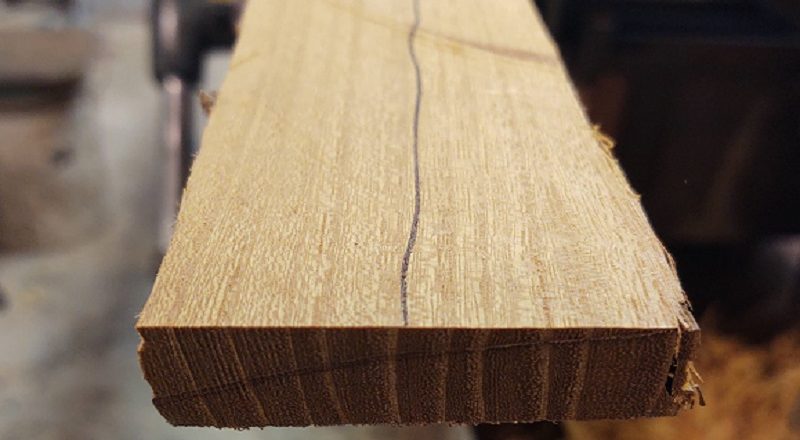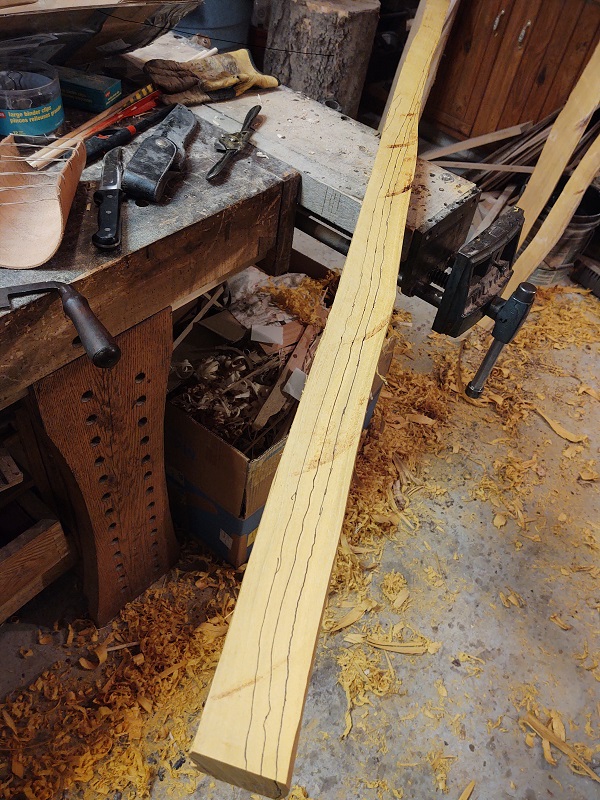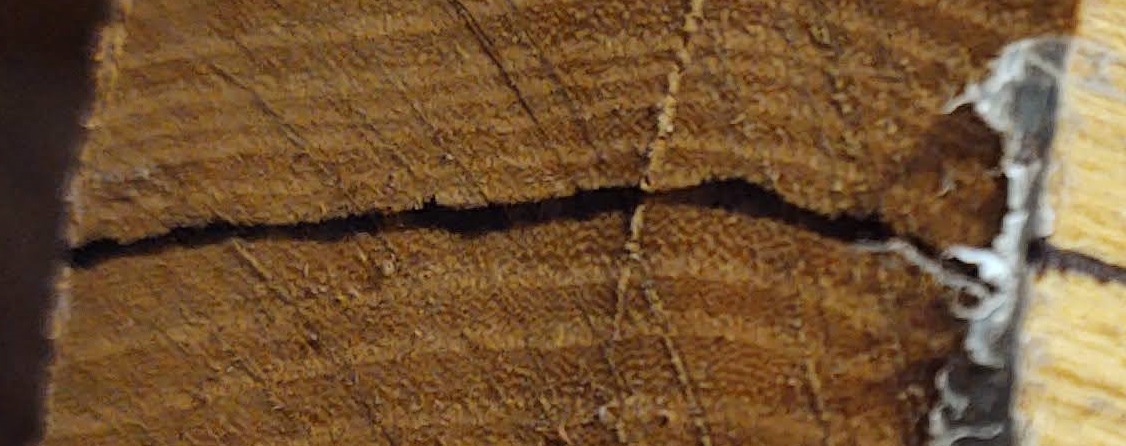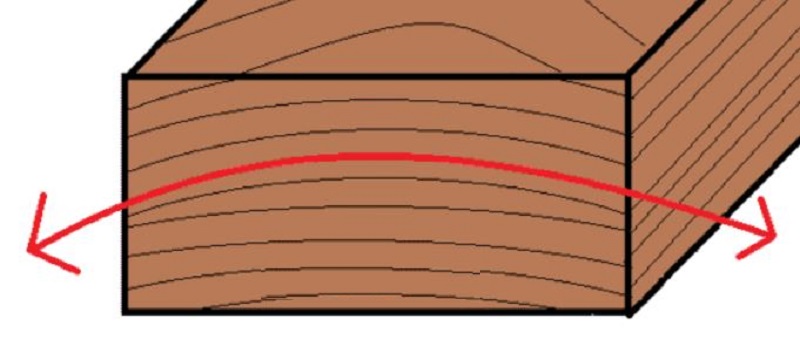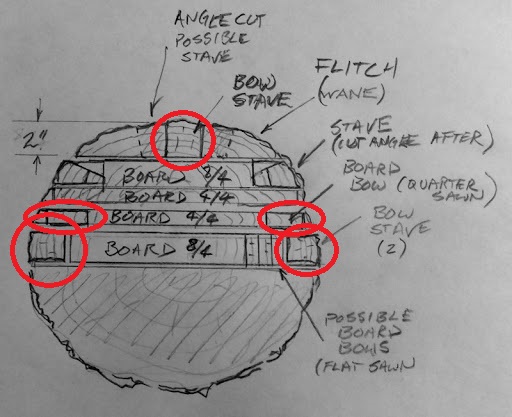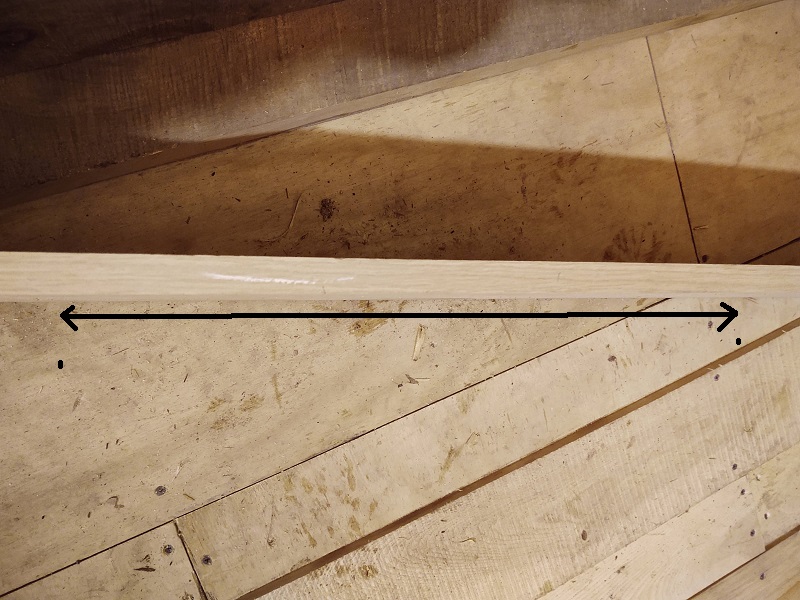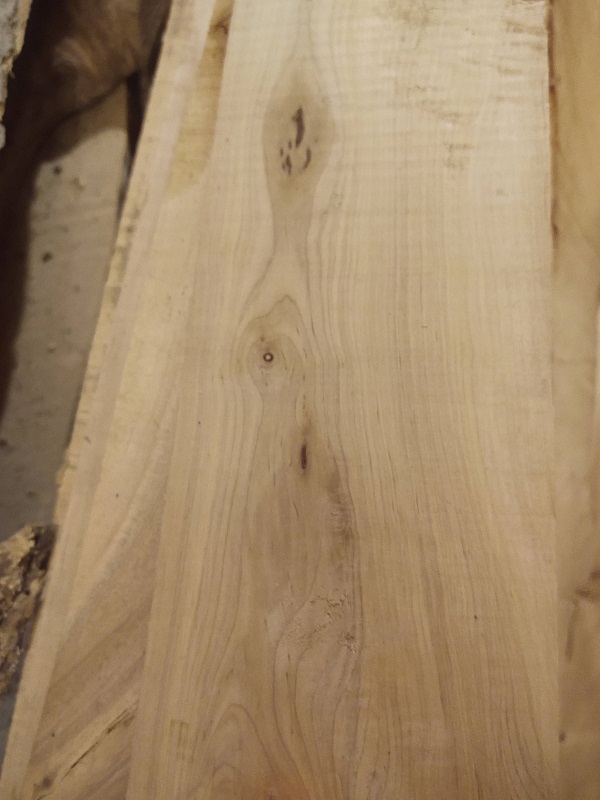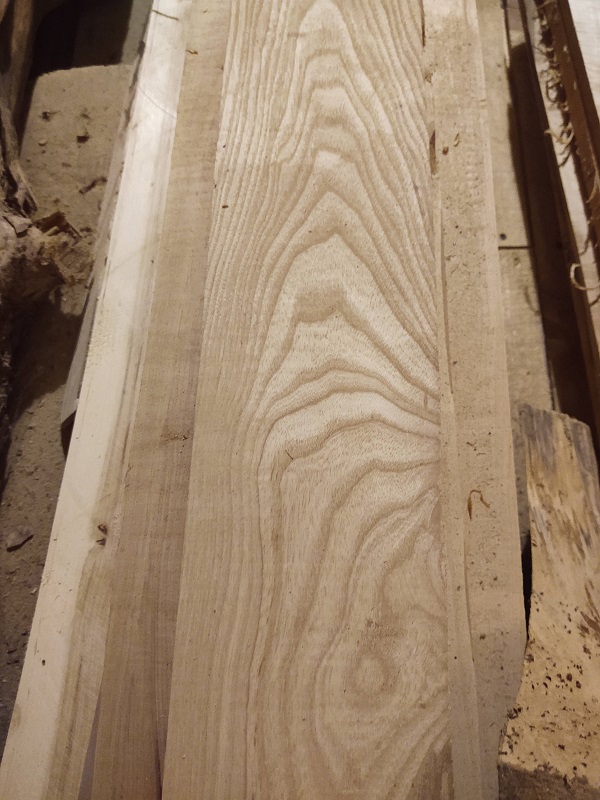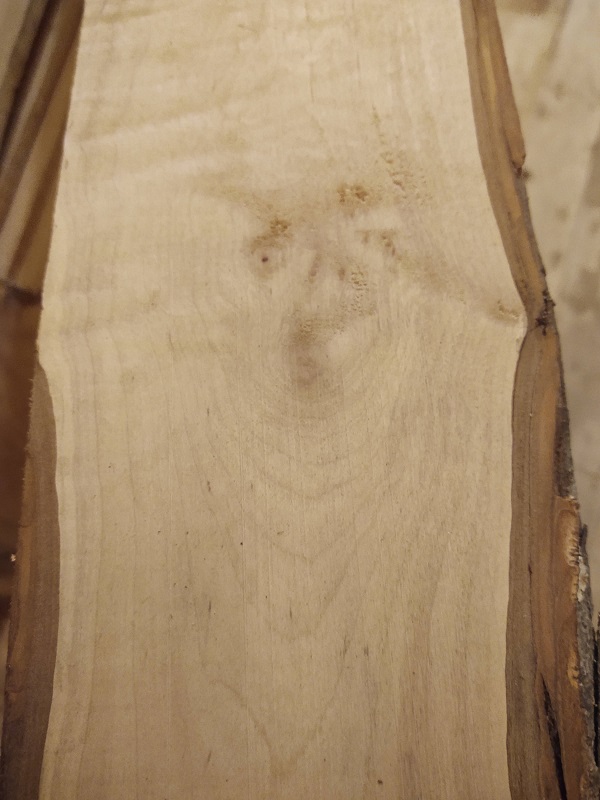How to Choose the Board for your Board Bow
or
Choose Your Board wisely.
The question about finding the proper board for a board bow comes up quite often.
Here are a few tips.
First lets talk about wood grain. What does grain mean in wood? Because of the way that wood grows, every piece of wood has a grain direction, which appears differently depending on how the board is sawn. Technically ‘wood grain’ refers to the alignment, texture and appearance of wood fibers.
It may help to take a pencil or marker (or even a sharp scribe) and follow the grain. Note at the top of the picture how the grain runs out the side? This is not a good board unless the bottom section is long enough (which this one was not) It is best if the grain line never leaves the bow. If it veers one way or the other, but you can layout the bow so it follows it, life is good.
You also want appropriate end grain. The following is one good example. This board was taken from a fairly large log so the rings are somewhat straight across. This will work!
However it doesn’t need to be from a large log. A small diameter tree can make a good bow. You should try something like this:
This is typical for flat sawn lumber. On a regular bow stave the bark side would be the top.
And from a much smaller tree will be ok as well.
This next board is a quarter sawn board, and rift sawn would look very similar. It will make a good bow as long as the grain on the top AND edge goes to the other end and doesn’t go off the side. A perfect board you could draw this line all the way around and a single grain line would meet. (the bark side would be to the left or right of this board. The back or belly could be the top or bottom of this board, it doesn’t matter)
Make sure you check both ends
Both ends should look the same. If one end looks like the grain goes on way and the other end looks like it goes another way, it’s not going to work.
Think like this, you want to be able to follow one grain line all the way around the board where the bow will lay out.
I had one board sent to me that had such a twist before it was cut that one end went 90 degrees oposite the other end.
This may also help to determine end grain
This next board would do well
The edge grain of the board is also important. The grain should run the length of the board.
The following will not work very well:
________________
As an Amazon associate, we earn income from qualifying purchases when you click on a link. Your link clicks help us fund our website.________________
